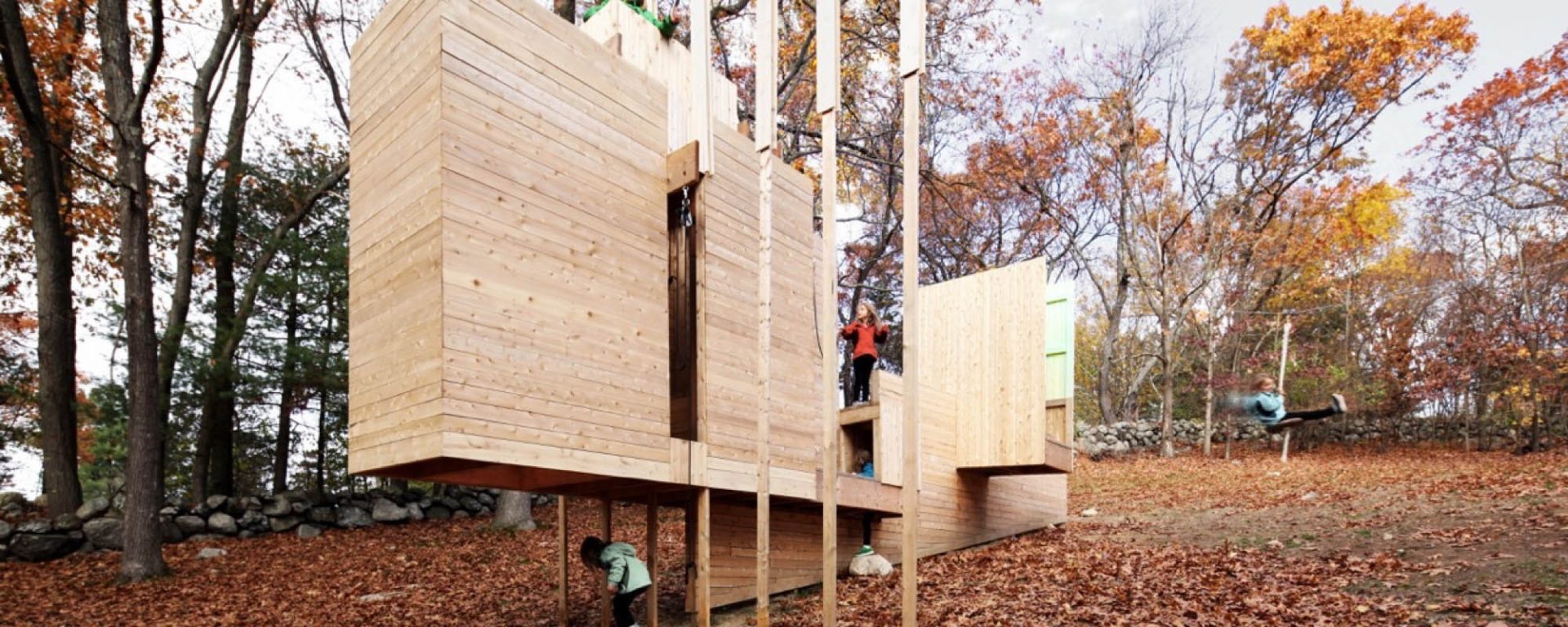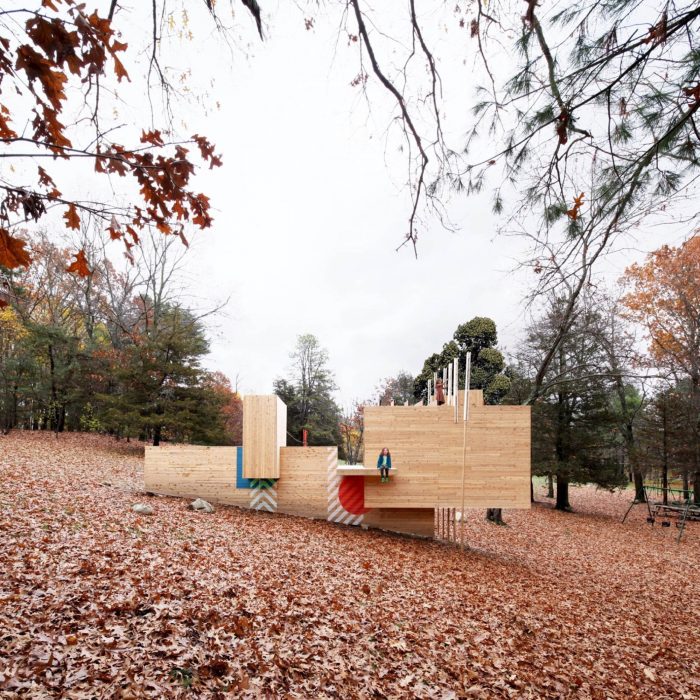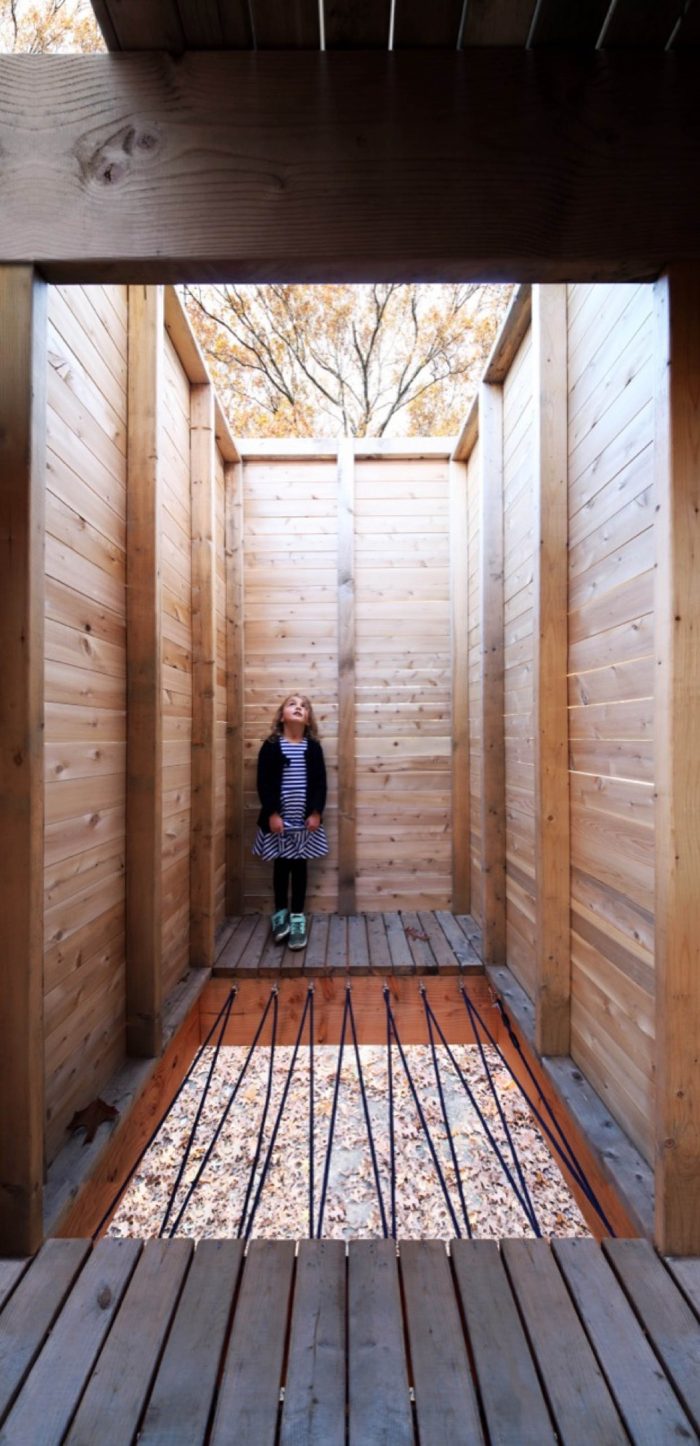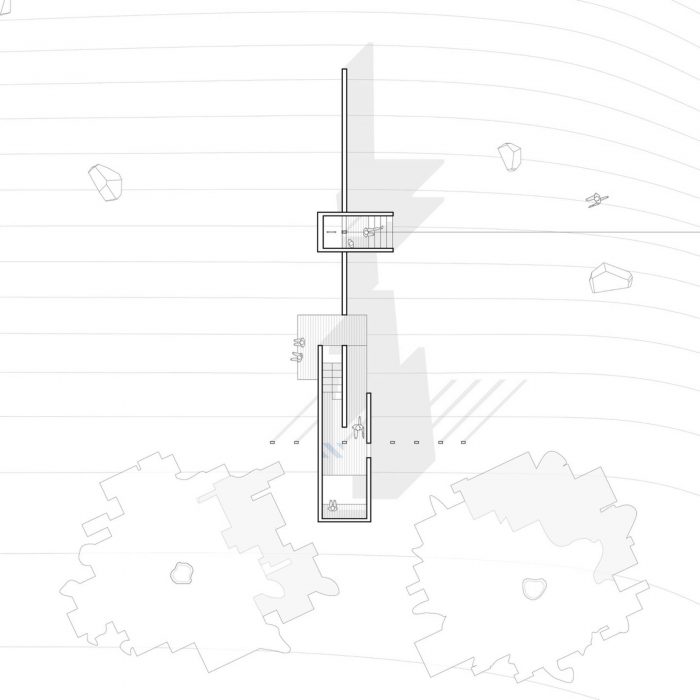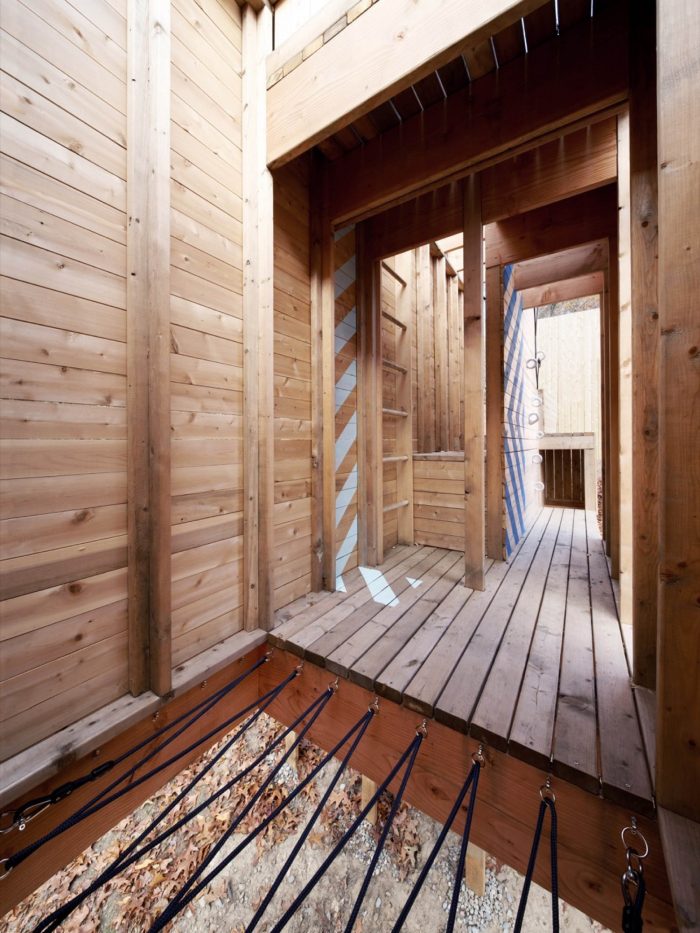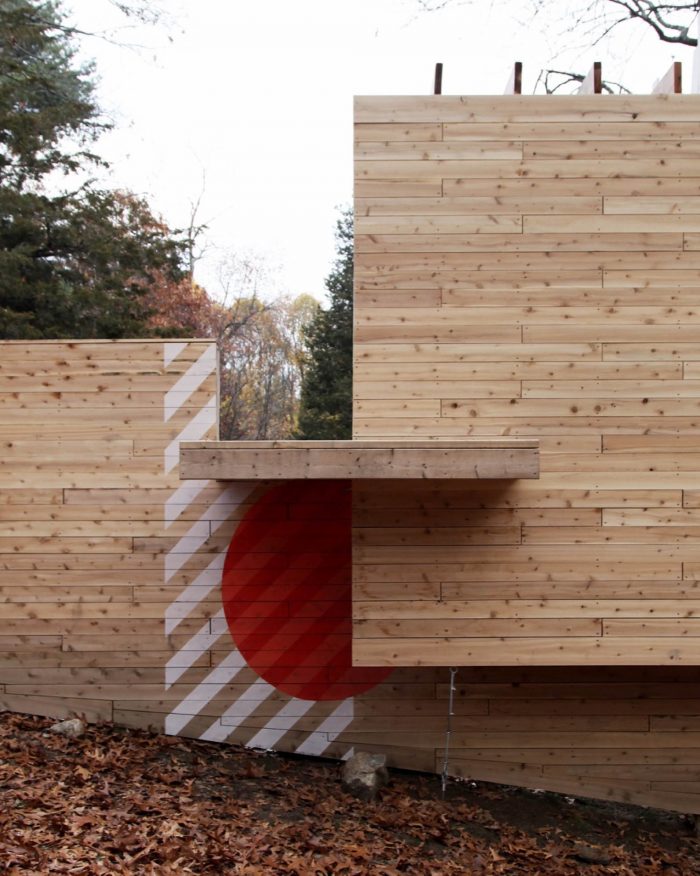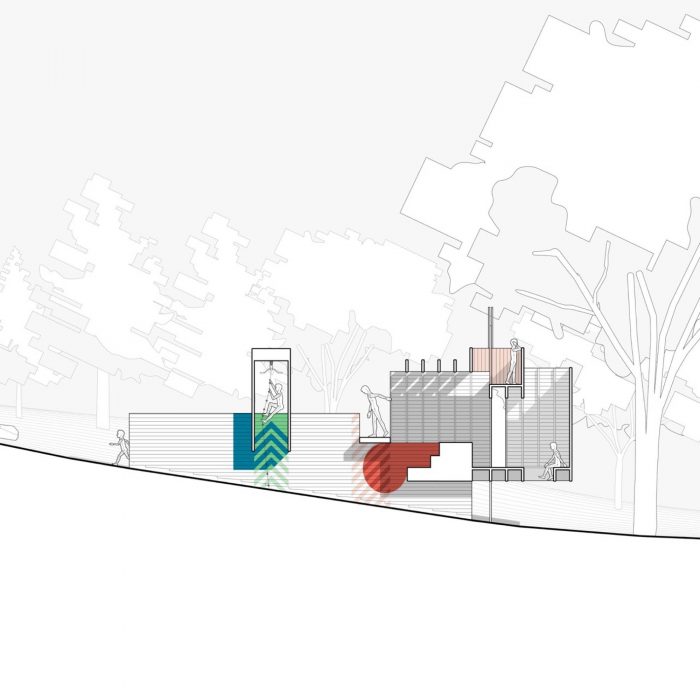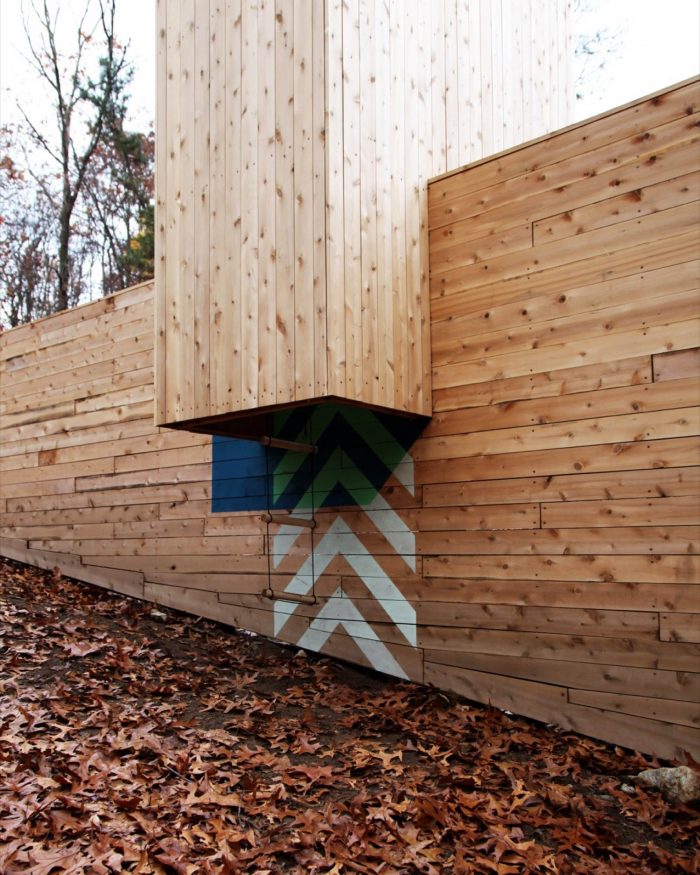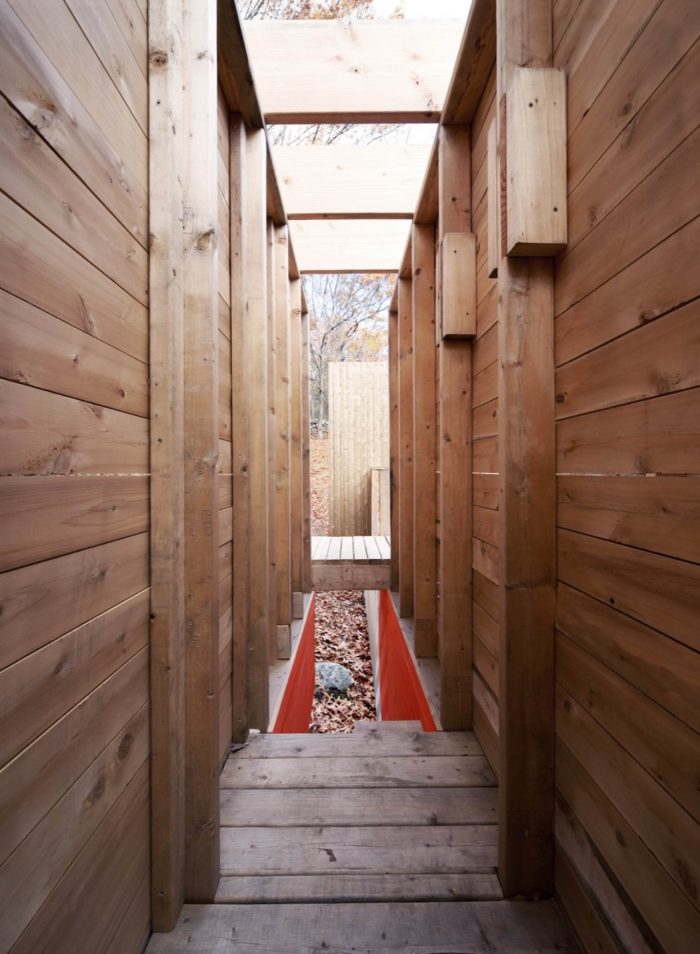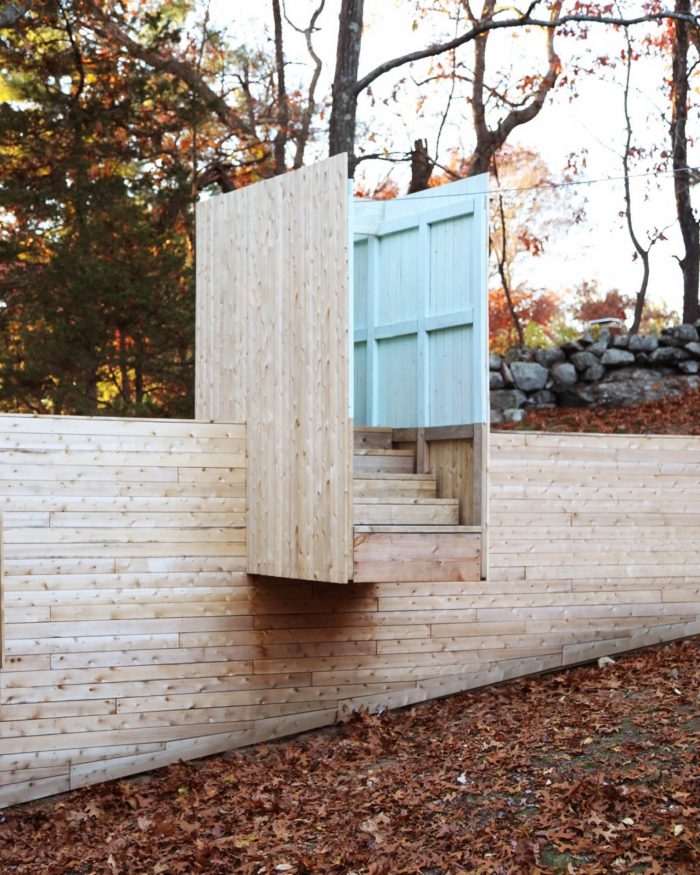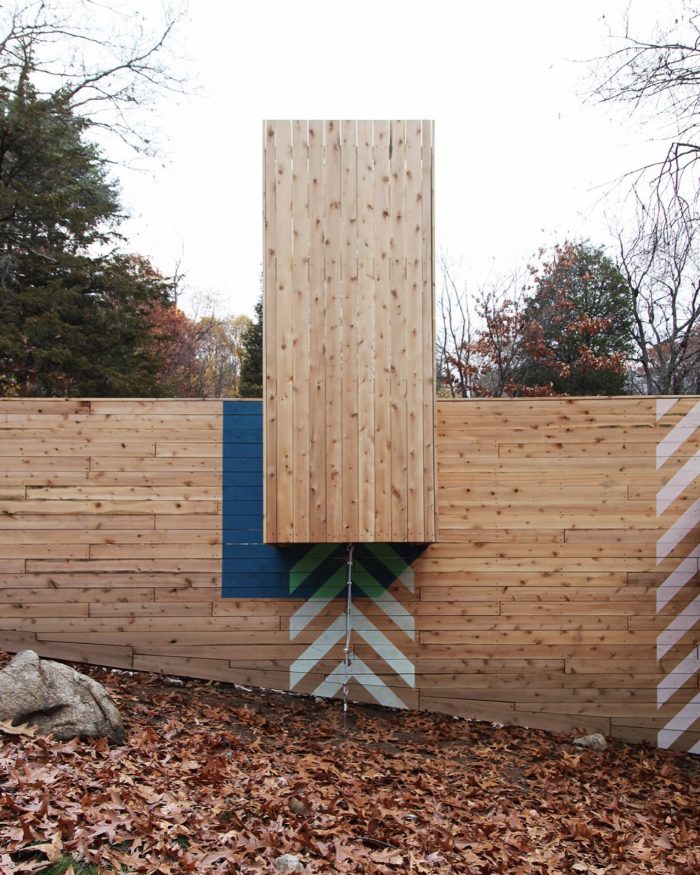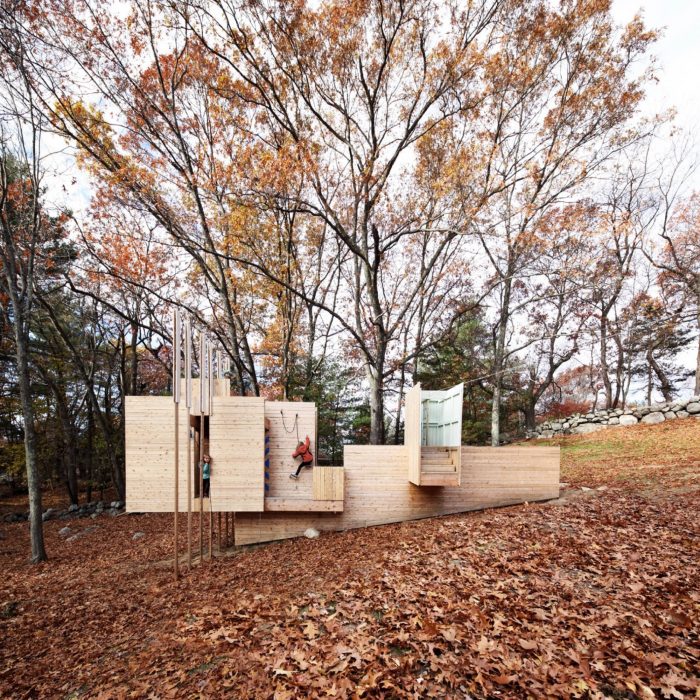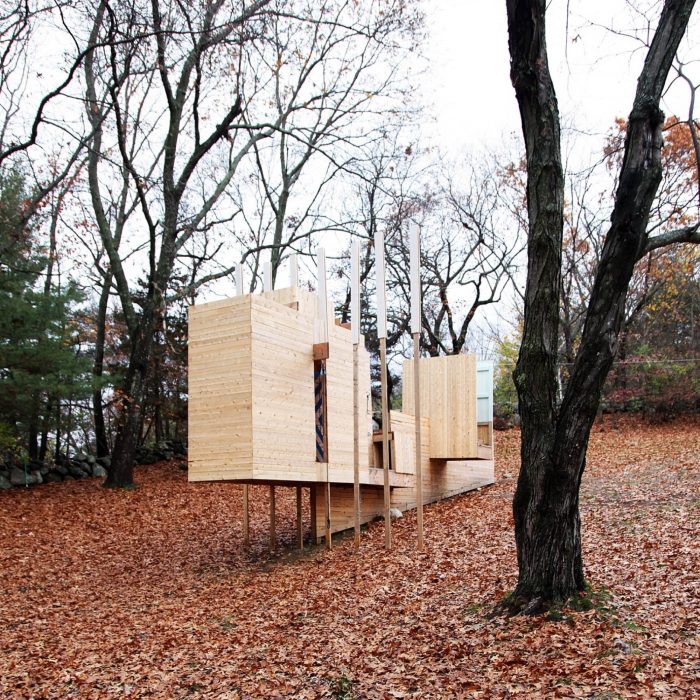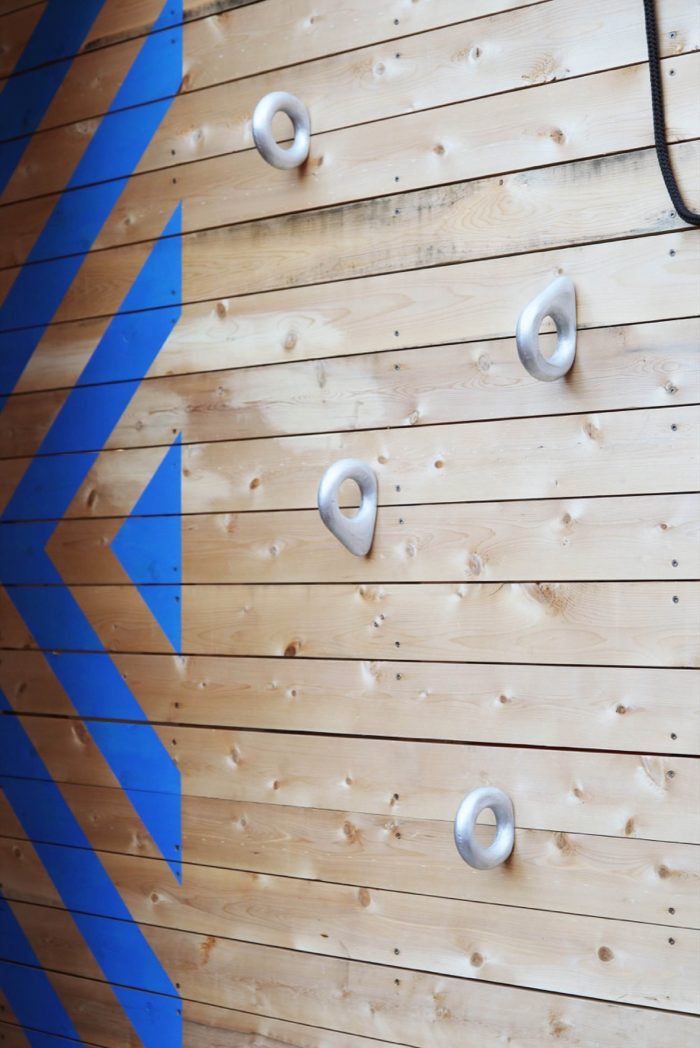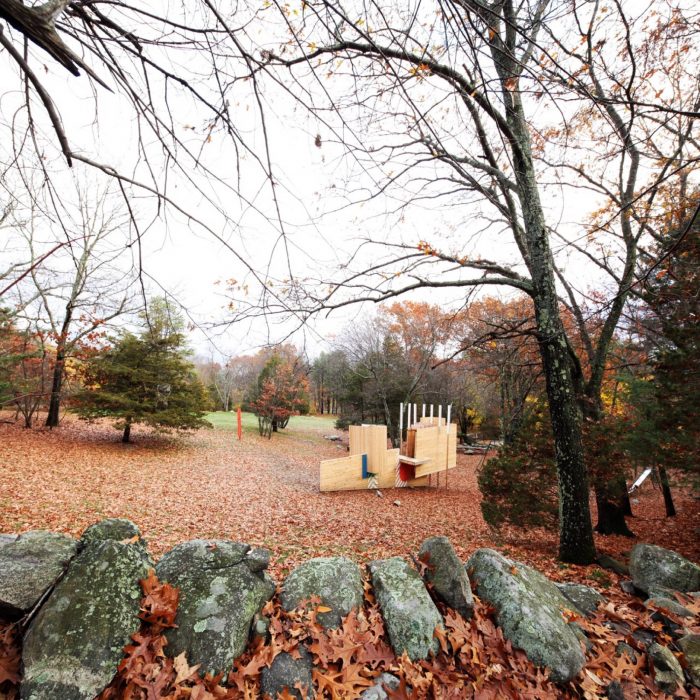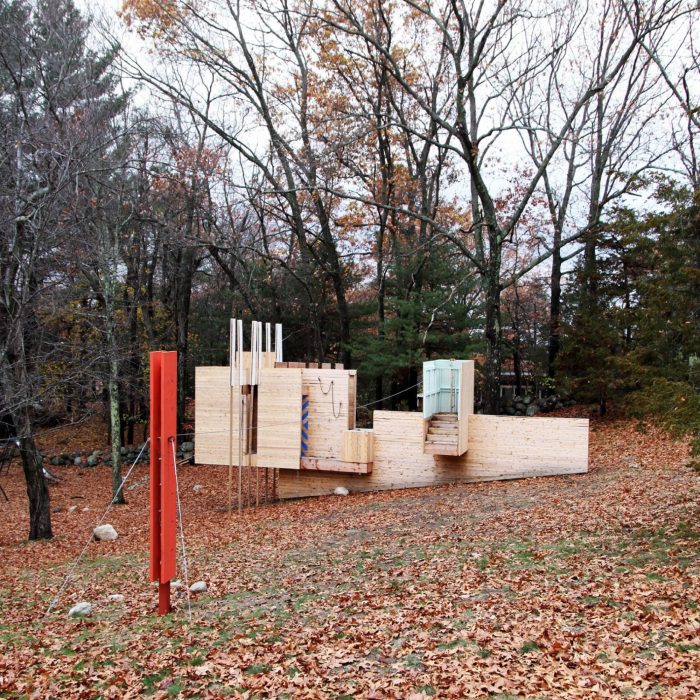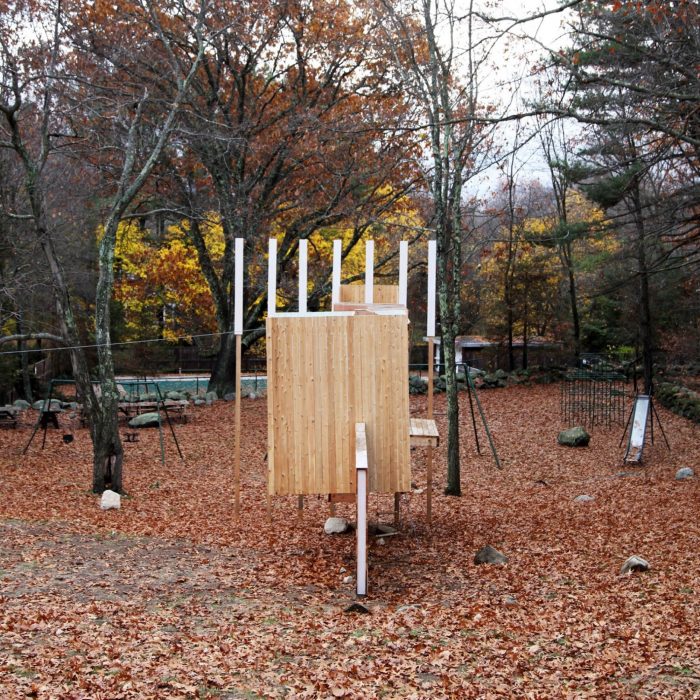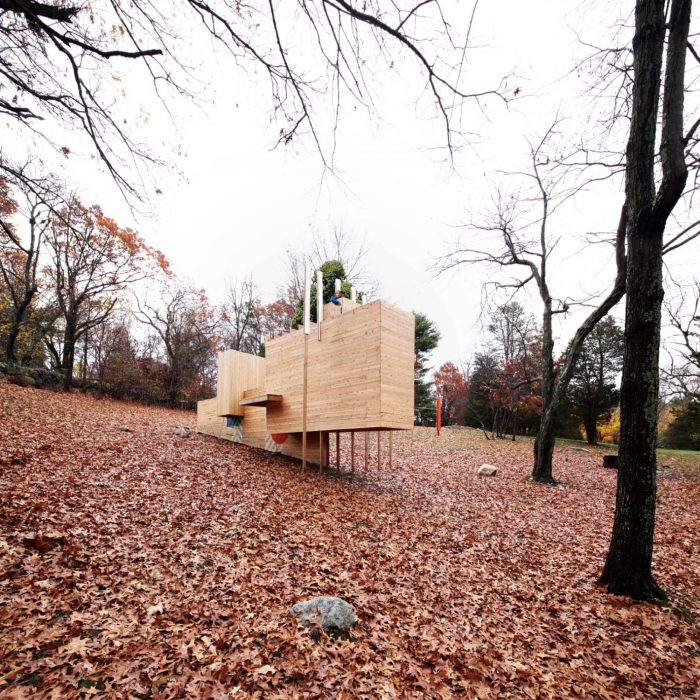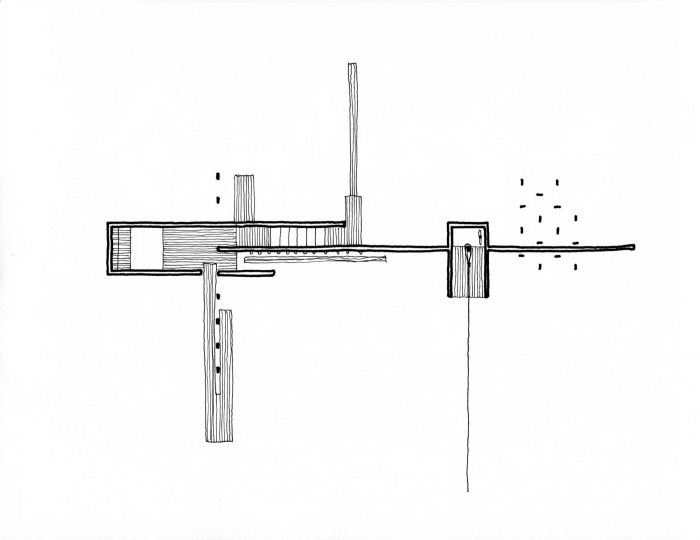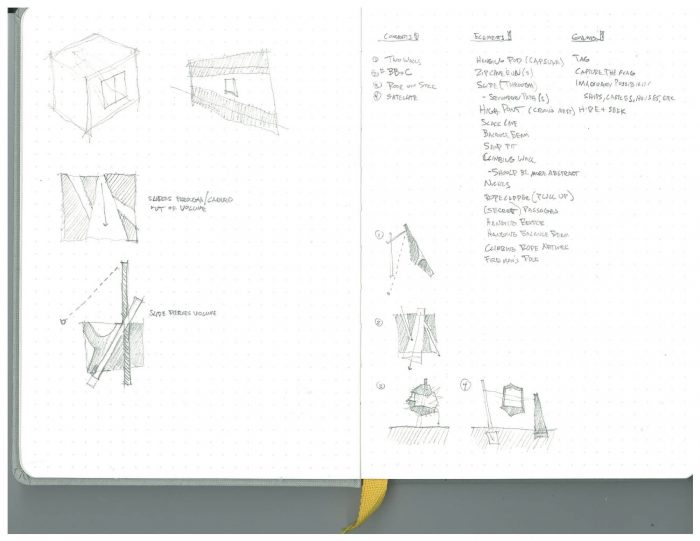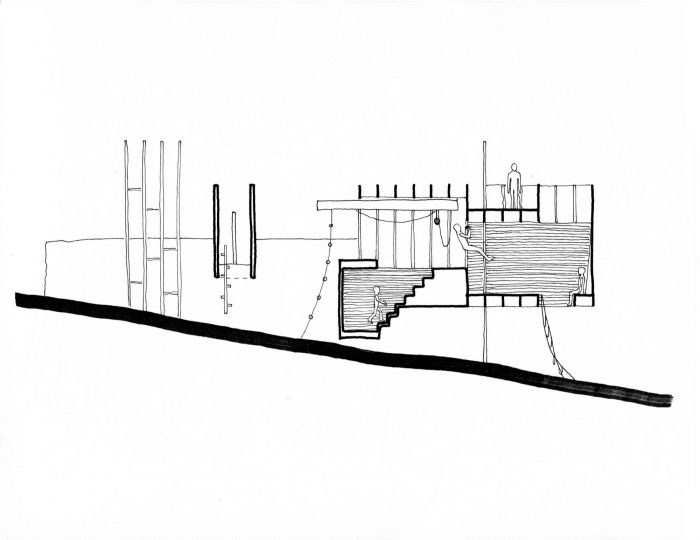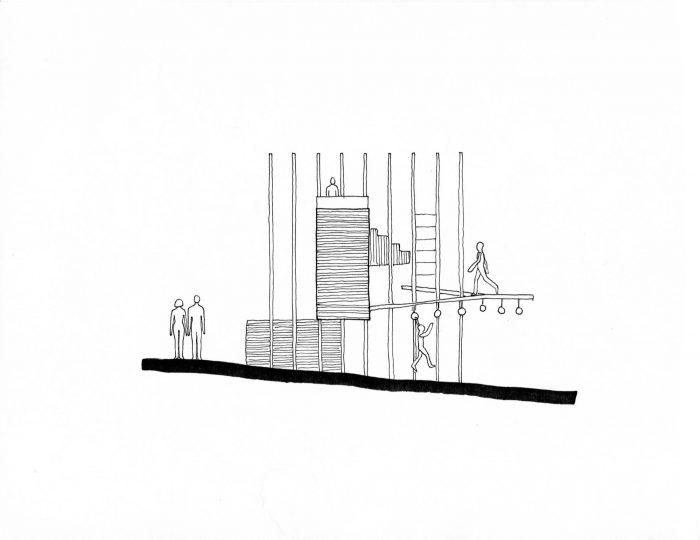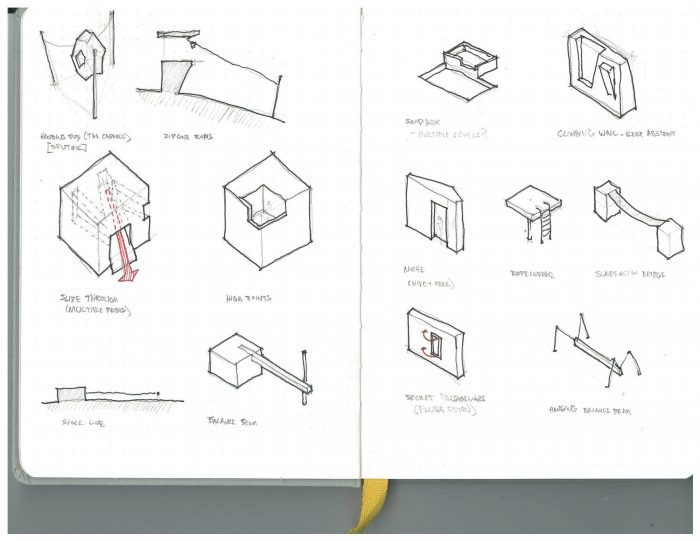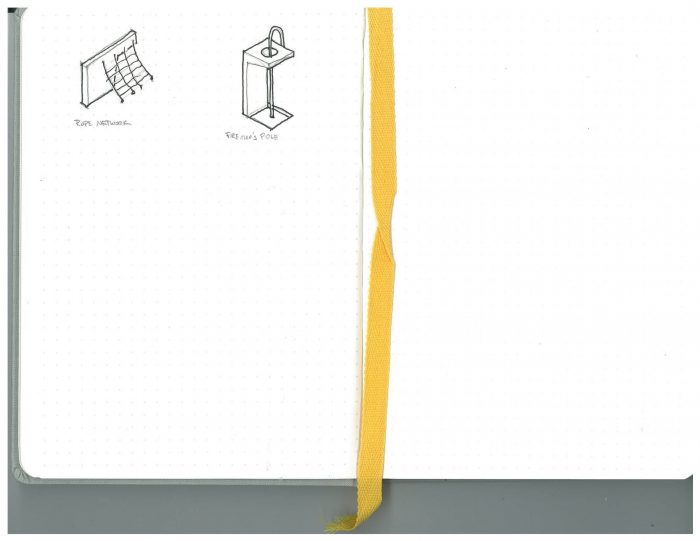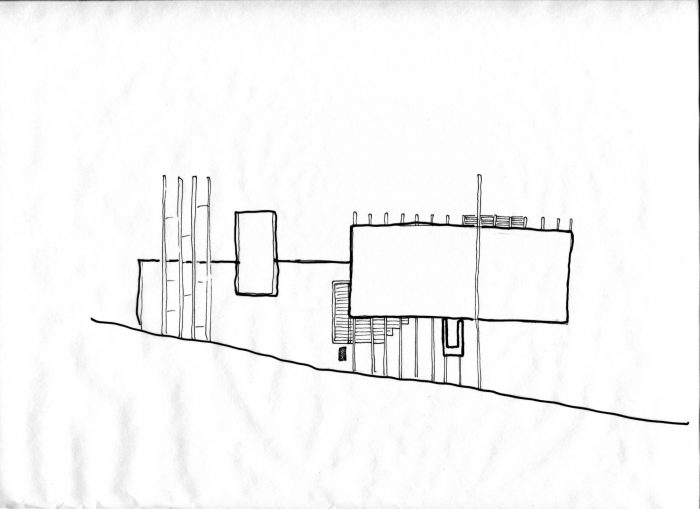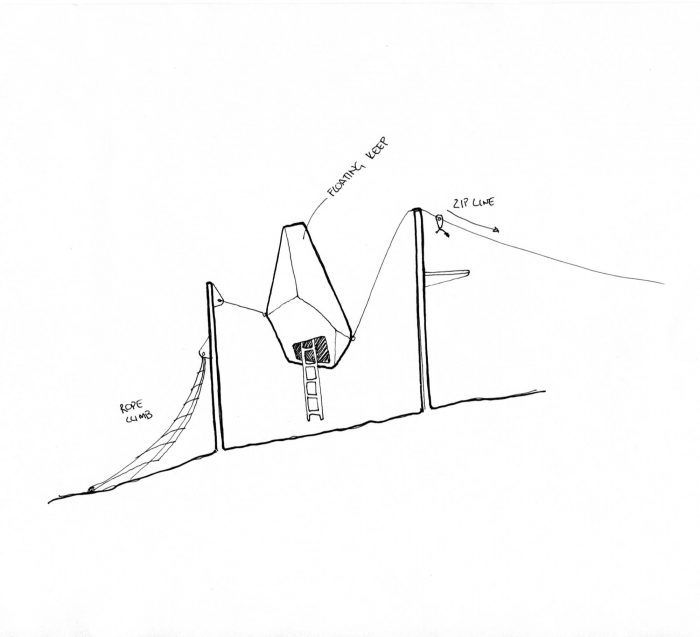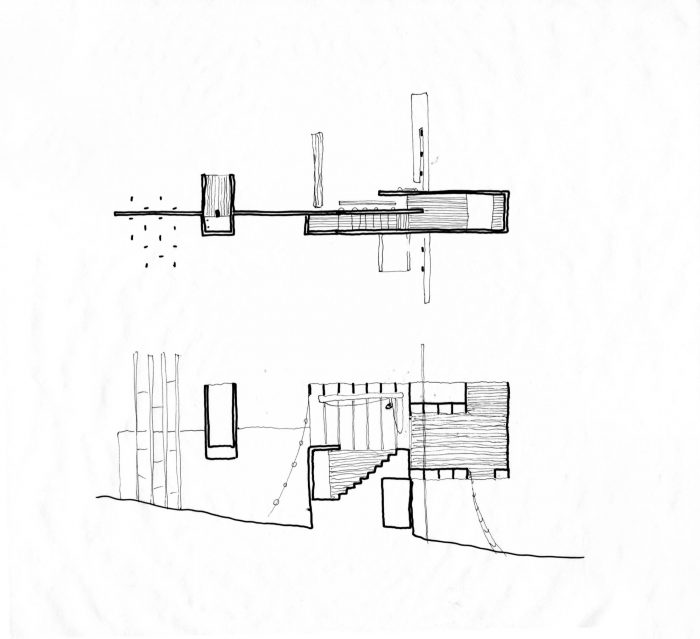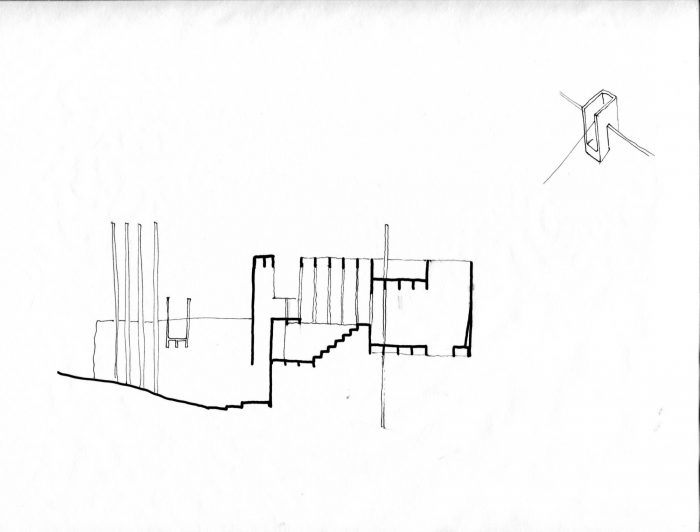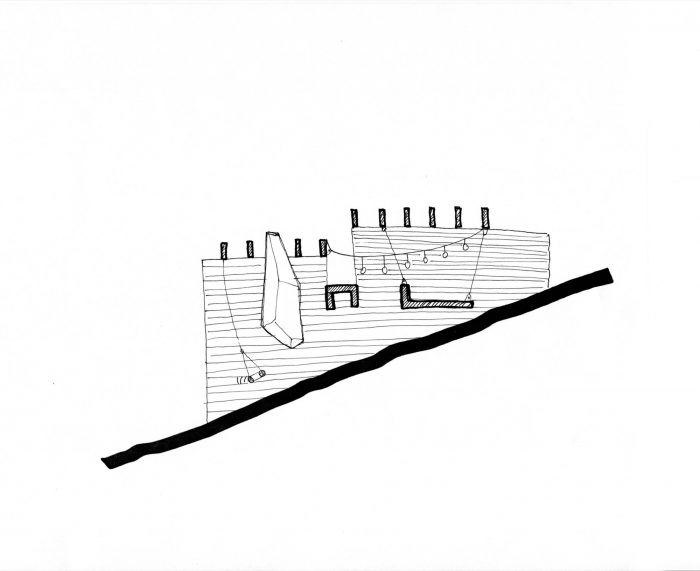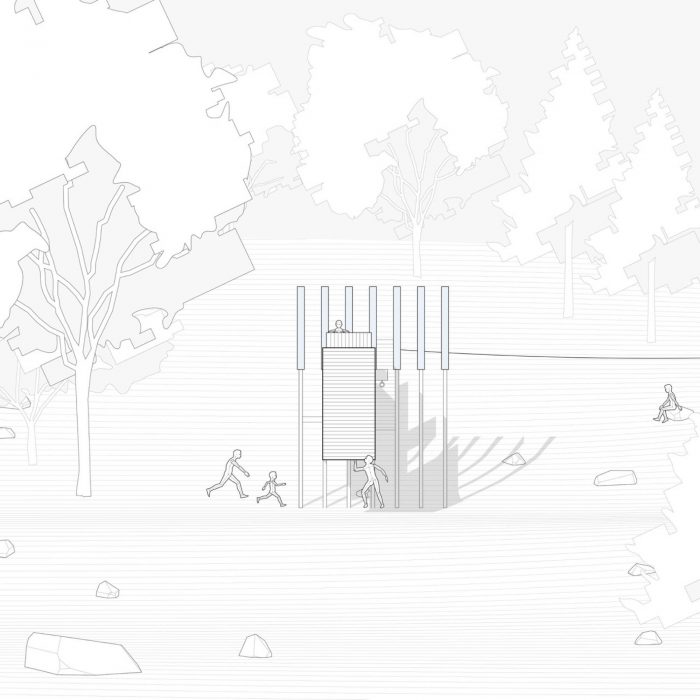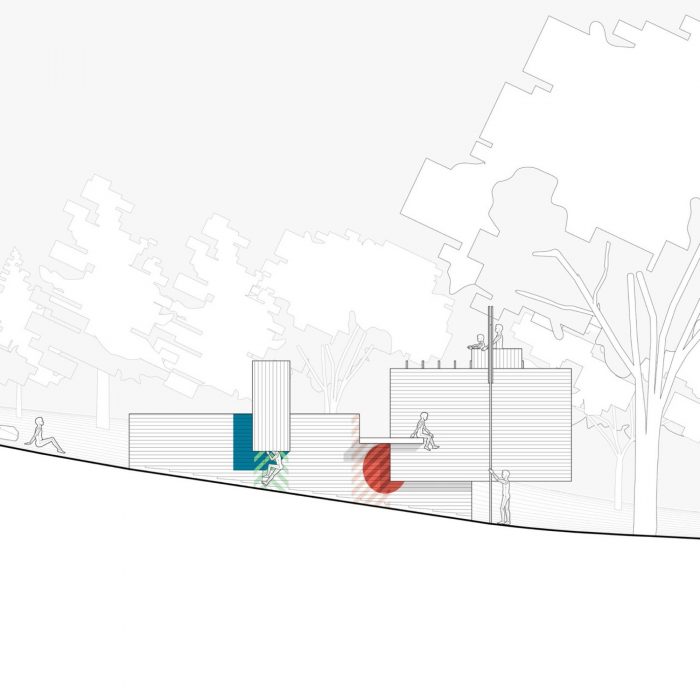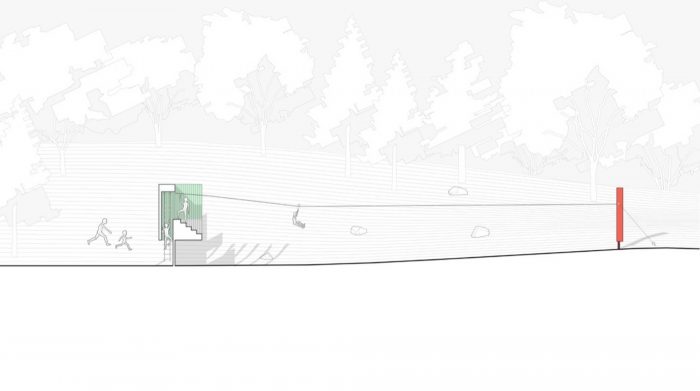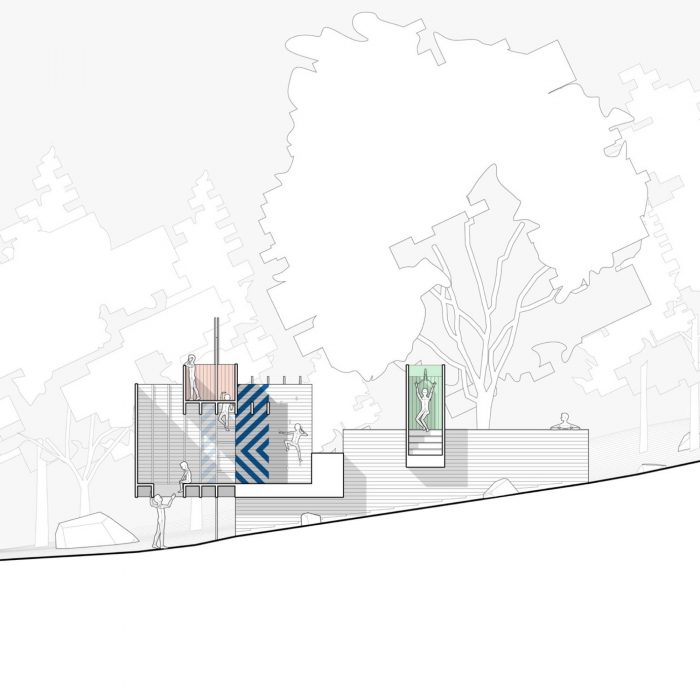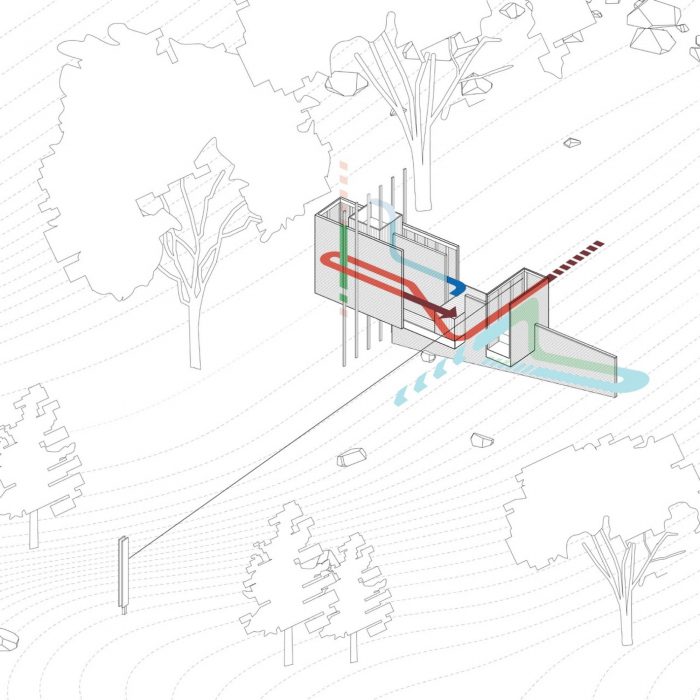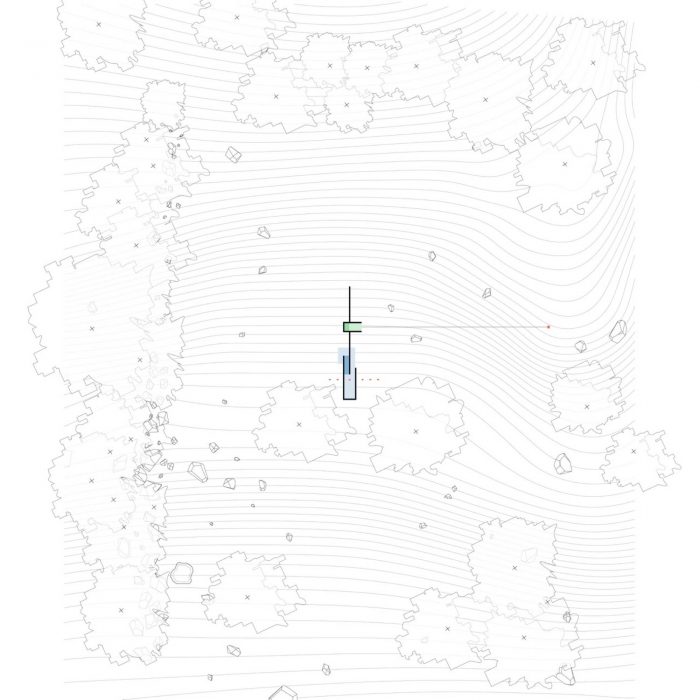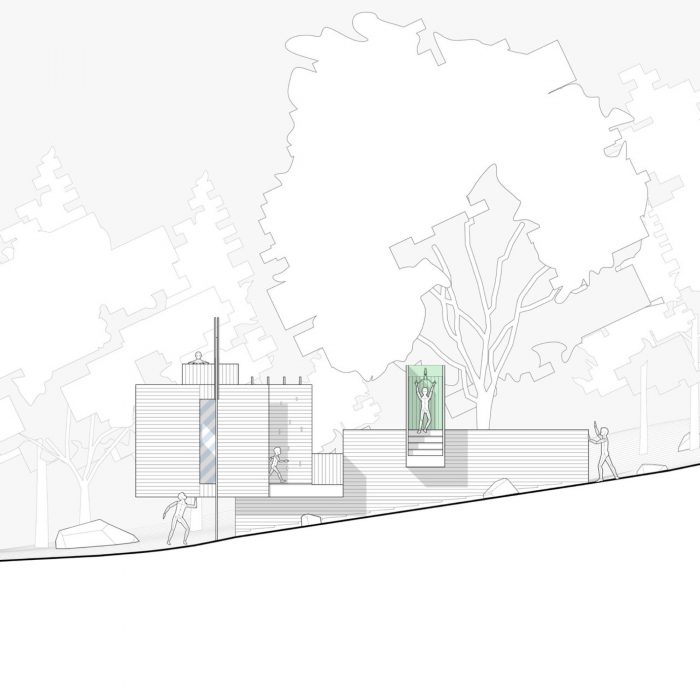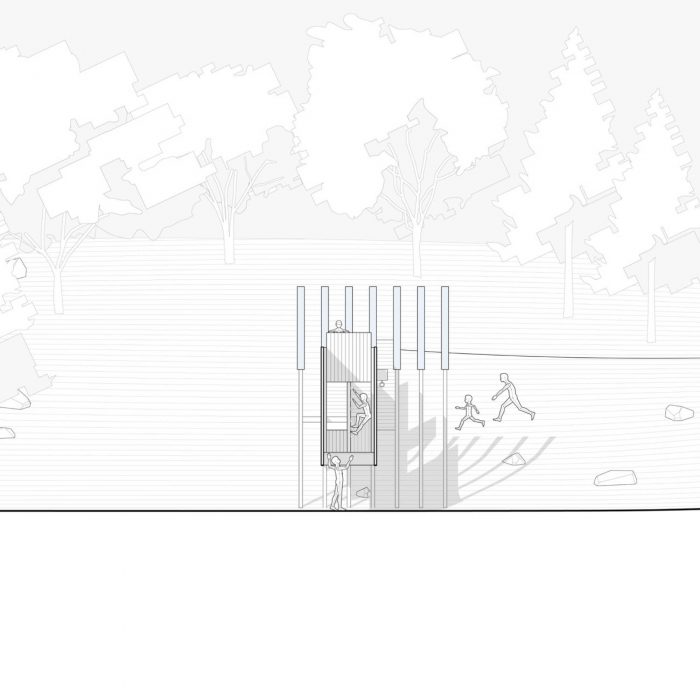这个游戏结构位于中世纪现代公共用地的坡地上,附近的孩子们在这里享受着一个共享的后院。建筑师合作组织在20世纪50年代初设计并开发了Five Fields社区,希望通过创造一块共享的公共土地来促进社区的发展。在随后的60多年里,业主们来了又走,但社区及其对公共土地的关心和赞赏依然存在。TAC将这个社区设想为一个实验,而社区希望保持实验精神,要求一个既安全又能让孩子们兴奋的结构。他们希望有一些能挑战孩子们的东西,但又没有任何单一的功能元素。
This play structure is situated on the sloping landscape of a mid-century modern common land, where neighborhood kids enjoy a shared backyard. The Architects Collaborative designed and developed the Five Fields neighborhood in the early 1950s hoping to foster community by creating a piece of shared common land. In the ensuing 60+ years homeowners have come and gone but the community and its care and appreciation for the common land remain. TAC conceived the neighborhood as an experiment and the community, wishing to keep the experimental spirit alive, requested a structure that is both safe and exhilarating for the kids. They wanted something that would challenge the kids without any singularly functional elements.
为孩子们设计一个游戏结构是一个独特而富有挑战性的项目。虽然在成人的日常生活中,有一些不可重复的标准来管理无障碍和功能,但游戏既不是标准的,也不是严格的功能。为此,这些空间对成年人来说是无障碍的,但为了让成年人慢下来,已经缩小了空间,解放了孩子们,让他们在空间中飞翔。
Designing a play structure intended for kids is a unique and challenging project. While there are irreducible standards that manage accessibility and function in the daily lives of adults, play is neither standard nor strictly functional. For this reason, these spaces are accessible to adults, but have been shrunk in order to slow the adults, liberating the kids to fly through the spaces.
这个项目也致力于想象力,抵制字面和单一的解读。二十英尺高的垂直元素在某一时刻为结构做出了贡献,但延伸到景观中–从功能到奇思妙想。色彩斑斓的图形暗示了入口和关键时刻,但没有明显的标签。像门和楼梯这样先入为主的建筑元素确实存在,但却没有通向任何地方。门槛被藏在悬浮的体积下,平衡在一面墙上。设计策略的另一个原则是提供通往任何地点的多种途径。这些决定为孩子们产生了升级的挑战;减轻了风险,并确保正确的年龄范围可以进入更危险的区域,而不是完全扣留它们。大一点的孩子爬过去,而小一点的孩子爬到下面。
The project is also dedicated to imagination, resisting literal and singular readings. Twenty-foot tall vertical elements contribute to the structure at one moment, but extend into the landscape—from function to whimsy. The colorful graphics suggest entries and key moments, without overtly labeling them. Pre-conceived architectural elements like doors and stairs do exist, but lead to nowhere. Thresholds are tucked under levitating volumes balanced on a single wall. Another principle of the design strategy provides multiple means of access to any location. These decisions produce escalating challenges for the kids; mitigating risk and ensuring the correct age-range have access to the more treacherous areas instead of withholding them entirely. Older kids climb over while younger crawl under.
建筑师: Matter Design , FR|SCH
面积:115平方英尺
年份:2016年
平面设计:Johanna Lobdell
项目团队:Dar Adams, Courtney Apgar, Josh Apgar, Michael Leviton, Daniel Marshall, Chris McGuiness, Dan Roseman
儿童顾问:Liam Apgar, Mack Apgar, Bella Dubrovsky, Sam Leviton, Ainsley Schanbacher, Judson Schanbacher
尺寸:长36’,高18’,宽4’66’zipline
事项设计:Brandon Clifford
Fr|Sch项目:Michael Schanbacher
城市:Lexington
国家:美国
Architects: Matter Design , FR|SCH
Area: 115 ft²
Year: 2016
Graphic Design:Johanna Lobdell
Project Team:Dar Adams, Courtney Apgar, Josh Apgar, Michael Leviton, Daniel Marshall, Chris McGuiness, Dan Roseman
Kid Consultants:Liam Apgar, Mack Apgar, Bella Dubrovsky, Sam Leviton, Ainsley Schanbacher, Judson Schanbacher
Size:36’ long, 18’ tall and 4’ wide 66’ zipline
Matter Design:Brandon Clifford
Fr|Sch Projects:Michael Schanbacher
City:Lexington
Country:United States

